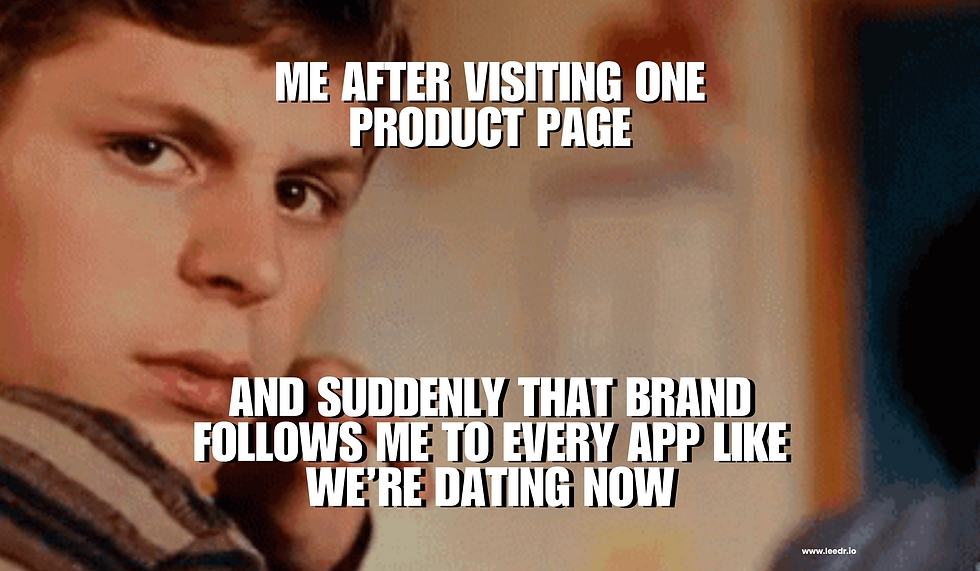What Is User-Generated Content (UGC) and Why Is It Important?
- Leedr

- Oct 23, 2023
- 3 min read
Updated: Oct 24, 2023

Marketing strategies have gone far beyond the traditional mediums of TV and print ads. One of the most innovative ways businesses and brands are connecting with their audience is through User-Generated Content (UGC).
"User-Generated Content (UGC) refers to any form of content—text, videos, photos, reviews, etc.—that is created by people, rather than brands."
In essence, UGC is an authentic way of involving your community in your marketing efforts. It not only provides fresh and engaging content but also helps to:
- Increase engagement rates: Social proof from UGC can lead to higher engagement.
- Build community and customer trust: Authentic reviews and testimonials lend credibility.
- Cut costs: It's a cost-effective alternative to traditional advertising methods.
Real-World Examples
Example 1: Airbnb Reviews

Airbnb hosts have benefited greatly from guest reviews. These reviews provide authentic accounts of people's experiences, fostering trust and ultimately increasing bookings.
"A single authentic review can be more impactful than a dozen professionally-shot photos."
Example 2: Coca-Cola's "#ShareACoke" Campaign

Who can forget the "#ShareACoke" campaign by Coca-Cola? Users were encouraged to find Coke bottles with names or terms that resonated with them and share their experiences online. The campaign became viral and boosted both online engagement and offline sales.
"The '#ShareACoke' campaign turned everyday consumers into avid content creators and advertisers for the brand."
Example 3: GoPro User Videos

GoPro cameras are often advertised through videos shot by their own users, showcasing the camera's capabilities in real-world settings. This is free, high-quality advertising for GoPro and serves to build community around the brand.
Who Is This Ideal For and Why
UGC is an ideal strategy for:
Small to Medium Businesses: Lower budgets can still yield effective marketing through UGC.
Influencers and Content Creators: Boost engagement and interaction within your community.
Consumer Trust-Centric Companies: Particularly in industries like hospitality and health where consumer trust is vital.
Who Isn't This Ideal For and Why
UGC isn't for everyone, especially:
Highly Regulated Industries: Legal risks could pose problems.
Overwhelmed Businesses: Those unable to manage and moderate incoming content.
"Just because UGC is effective doesn't mean it's a one-size-fits-all solution."
When to Use It
Product Launches: Build anticipation and buzz.
Special Promotions or Events: Engage users with hashtags and challenges.
Ongoing Community Engagement: Regularly feature user stories or reviews.
Crisis Management: Rebuild customer trust through authentic testimonials.
How Can You Use This
Planning Stage
Define Objectives: What do you aim to achieve?
Identify Target Audience: Know who you're speaking to.
Implementation Stage
Choose Platforms: Will you collect UGC on Instagram, Facebook, Twitter, or another platform?
Set Guidelines: What type of content are you expecting?
Promotion Stage
Announce Campaign: Let your audience know how they can participate.
Incentivise: Consider giveaways or features to encourage submissions.
Management Stage
Moderate Submissions: Ensure content aligns with your brand and policies.
Measure Effectiveness: Use analytics tools to gauge the impact.
Feedback Loop
Reward Contributors: Acknowledge those who've made quality contributions.
Iterate: Use data to refine your future campaigns.
"Don't just set and forget; UGC requires ongoing management and refinement."
UGC platforms can make this process far easier and more effective. Below, we delve into some top platforms that can help you manage and leverage User-Generated Content for your brand.
TINT
Pros:
Versatile: Collects UGC from multiple social networks.
Display Options: Allows you to showcase UGC on various platforms, from your website to live events.
Cons:
Can be Pricey: Plans can get expensive for smaller businesses.
Yotpo
Pros:
Specialized: Primarily designed for e-commerce, focusing on customer reviews, photos, and Q&A.
SEO Benefits: Structured data helps your Google rankings.
Cons:
Limited Social Integration: Less useful if your primary source of UGC is social media.
Stackla
Pros:
AI-Powered: Uses machine learning to sift through and pick the best UGC.
Multi-Channel: Aggregate content from websites, social media, and even direct customer uploads.
Cons:
Learning Curve: Some users find it a bit complex initially.
WordPress with BuddyPress Plugin
Pros:
Customizable: Easily turn your WordPress site into a UGC hub.
Cost-Effective: Many features are available in the free version.
Cons:
Limited to WordPress: Not useful if you're using a different CMS.
Shopify with Product Reviews App
Pros:
Integrated: Works seamlessly with your Shopify store.
Easy to Use: Intuitive for both business owners and customers.
Cons:
Limited Features: Basic functionality, may require additional apps for more features.
"Choosing the right UGC platform can make or break your campaign. Consider your needs carefully."
Each of these platforms comes with its own set of advantages and limitations, so you'll need to consider your specific needs, industry, and the type of content you aim to collect. Whether you're looking for a specialized platform like Yotpo for e-commerce or a more general tool like TINT, there's likely a UGC platform perfectly suited to your needs.
UGC has proven to be a game-changer in modern marketing strategies. From building trust to saving money, its benefits are wide-ranging. So why not give it a go in your own business or creative endeavours?



